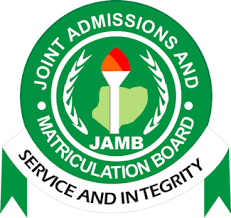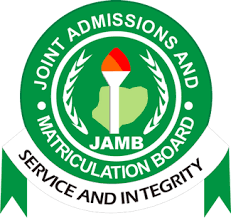
Securing a scholarship can be a transformative experience, offering financial relief and opening doors to educational opportunities that might otherwise be out of reach. At the heart of many scholarship applications lies the scholarship essay, a personal narrative that allows the selection committee to get to know you beyond your grades and test scores.
Writing a compelling scholarship essay can be the key to winning the scholarship, but it requires careful planning and thoughtful execution. In this blog post, I will walk you through a step-by-step guide on how to write a scholarship essay. Keep on reading dear friend!!!
How to Write a Scholarship Essay
1. Understand the Prompt
Before you start writing, it’s crucial to thoroughly understand the essay prompt. Scholarship essay prompts are designed to elicit specific responses that reflect your values, goals, and experiences. Take the time to break down the prompt:
- Identify Key Themes: What is the main question or theme? Is it asking about your leadership abilities, your community involvement, your career goals, or your personal background?
- Determine the Purpose: What is the scholarship committee looking for? Are they interested in how you’ve overcome challenges, how you plan to use your education, or how you contribute to your community?
Understanding the prompt allows you to tailor your essay to address the specific criteria the committee is evaluating.
2. Research the Scholarship Organization
Knowing who is offering the scholarship can give you valuable insight into what they value. Research the organization:
- Mission and Values: What is the organization’s mission? What do they stand for? Understanding their values can help you align your essay with what they care about.
- Past Recipients: If possible, research past recipients of the scholarship. What qualities do they possess? How do they reflect the organization’s goals?
This research can help you frame your essay in a way that resonates with the scholarship provider.
3. Brainstorm and Outline Your Ideas
Once you’ve understood the prompt and researched the organization, it’s time to brainstorm. Reflect on your life experiences, achievements, and goals. Consider the following:
- Personal Stories: Think about significant experiences that have shaped who you are today. These could be challenges you’ve overcome, leadership roles you’ve taken, or community service projects you’ve been involved in.
- Achievements and Goals: What are your academic and career aspirations? How does this scholarship help you achieve them? How do your past achievements demonstrate your potential for future success?
After brainstorming, organize your thoughts into an outline. A well-structured outline can serve as a roadmap for your essay, ensuring that your writing is coherent and focused.
4. Craft a Compelling Introduction
The introduction is your opportunity to grab the reader’s attention. A compelling introduction sets the tone for the rest of your essay and can make a lasting impression. Here are some strategies:
- Start with a Hook: Open with an engaging statement, question, or anecdote that piques the reader’s interest. This could be a surprising fact, a personal story, or a bold statement related to the prompt.
- Provide Context: Briefly introduce the main themes of your essay. Let the reader know what to expect in the following paragraphs.
- State Your Thesis: Clearly articulate the main point or purpose of your essay. Your thesis should directly respond to the prompt and guide the rest of your writing.
5. Develop the Body of Your Essay
The body of your essay is where you expand on your introduction and provide detailed evidence to support your thesis. Each paragraph should focus on a specific theme or idea:
- Use Personal Experiences: Illustrate your points with personal stories and examples. Be specific—describe situations in detail, including what you did, why you did it, and what you learned.
- Highlight Achievements: Showcase your accomplishments, but do so humbly. Explain how your achievements have prepared you for the future and align with the goals of the scholarship.
- Connect to the Prompt: Ensure that every paragraph ties back to the scholarship essay prompt. This keeps your essay focused and relevant.
6. Conclude with Impact
The conclusion is your final opportunity to leave a lasting impression. It should reinforce the main themes of your essay and clearly articulate why you are deserving of the scholarship:
- Summarize Key Points: Briefly recap the main points you’ve made in the essay, tying them back to the prompt.
- Express Gratitude: Acknowledge the opportunity to apply for the scholarship and express gratitude to the selection committee for considering your application.
- End with a Strong Statement: Close with a powerful statement that encapsulates your passion, determination, or vision for the future. Leave the reader with a sense of your commitment and potential.
7. Revise and Edit
Once you’ve written your essay, take the time to revise and edit:
- Check for Clarity: Ensure that your ideas are clearly expressed and that the essay flows logically from one point to the next.
- Eliminate Errors: Proofread for spelling, grammar, and punctuation errors. Even small mistakes can detract from the professionalism of your essay.
- Seek Feedback: Consider asking teachers, mentors, or peers to review your essay. Fresh eyes can catch mistakes you might have missed and provide valuable feedback on content and tone.
8. Stay True to Yourself
While it’s important to present yourself in the best light possible, authenticity is key. Scholarship committees read hundreds, sometimes thousands, of essays, and they can often tell when an essay is overly polished or inauthentic. Be honest about your experiences, aspirations, and challenges. Let your true self shine through your writing.
9. Adhere to Guidelines
Finally, make sure your essay adheres to all the guidelines provided by the scholarship organization. This includes:
- Word Count: Stick to the word limit. Writing too little can make your essay seem incomplete, while writing too much can make it feel unfocused.
- Formatting: Follow any specific formatting instructions, such as font type, size, and spacing.
- Submission Requirements: Submit your essay by the deadline and in the manner specified by the scholarship organization (e.g., online submission, email attachment, etc.).
ALSO READ: 10 Canadian Universities with Application Fee Waivers
Frequently Asked Questions – FAQs
In this section, I would you with FAQs and answers on How to Write a Scholarship Essay.
1. What are the most important elements of a winning scholarship essay?
A winning scholarship essay typically includes a strong, engaging introduction, clear and compelling storytelling, and a focused response to the prompt. It should highlight your unique experiences, demonstrate your potential for future success, and align with the values of the scholarship organization. Additionally, proper grammar, adherence to guidelines, and a clear structure are essential.
2. How should I start my scholarship essay?
Start your scholarship essay with a hook that grabs the reader’s attention. This could be an intriguing personal anecdote, a surprising fact, or a thought-provoking question. After the hook, provide context by briefly introducing the main themes of your essay and state your thesis, which should directly respond to the prompt.
3. What kind of personal stories should I include in my essay?
Include personal stories that are relevant to the prompt and showcase your character, achievements, and growth. These stories should illustrate how you’ve overcome challenges, taken on leadership roles, or made a positive impact on your community. Be specific and detailed to make your experiences come alive for the reader.
4. How can I make my essay stand out from other applicants?
To make your essay stand out, focus on authenticity and originality. Share experiences and insights that are uniquely yours. Avoid clichés and generic statements, and instead, provide detailed, personal examples. Additionally, align your essay with the mission and values of the scholarship organization, demonstrating why you are the ideal candidate.
5. What are common mistakes to avoid in a scholarship essay?
Common mistakes include failing to answer the prompt directly, writing a generic essay that could apply to any scholarship, exceeding the word limit, and neglecting to proofread for spelling and grammar errors. Another mistake is not researching the scholarship organization, which can lead to an essay that doesn’t resonate with the selection committee.







